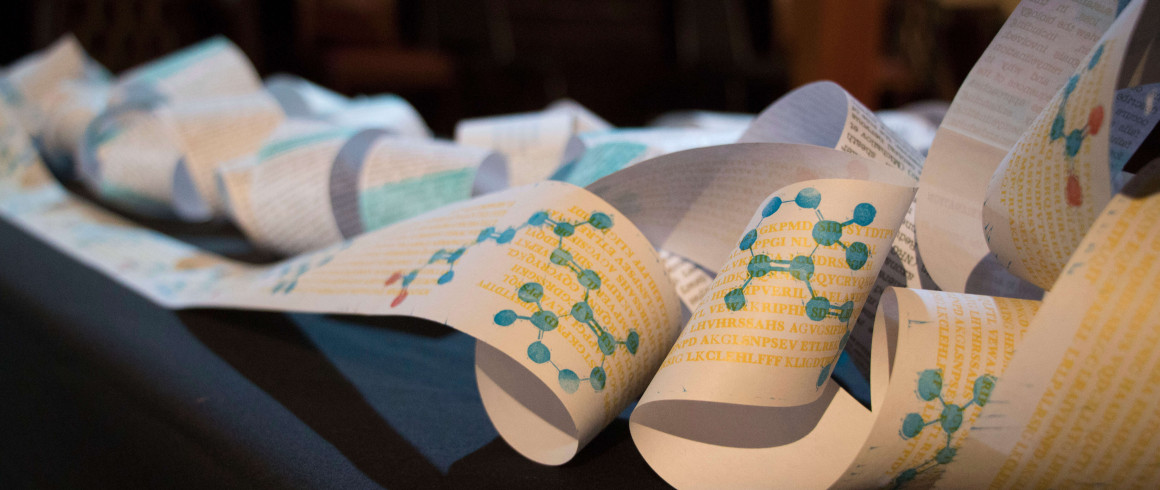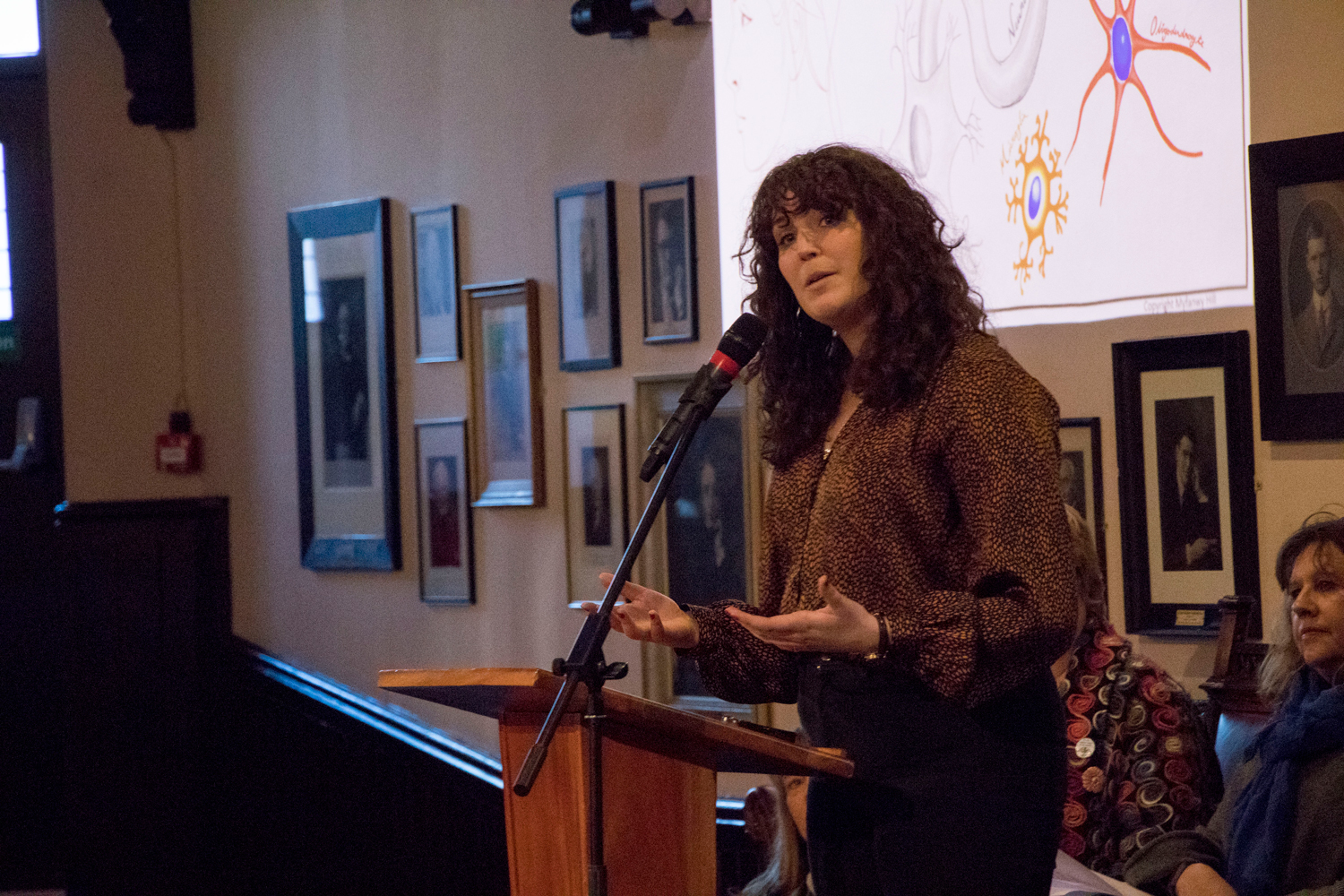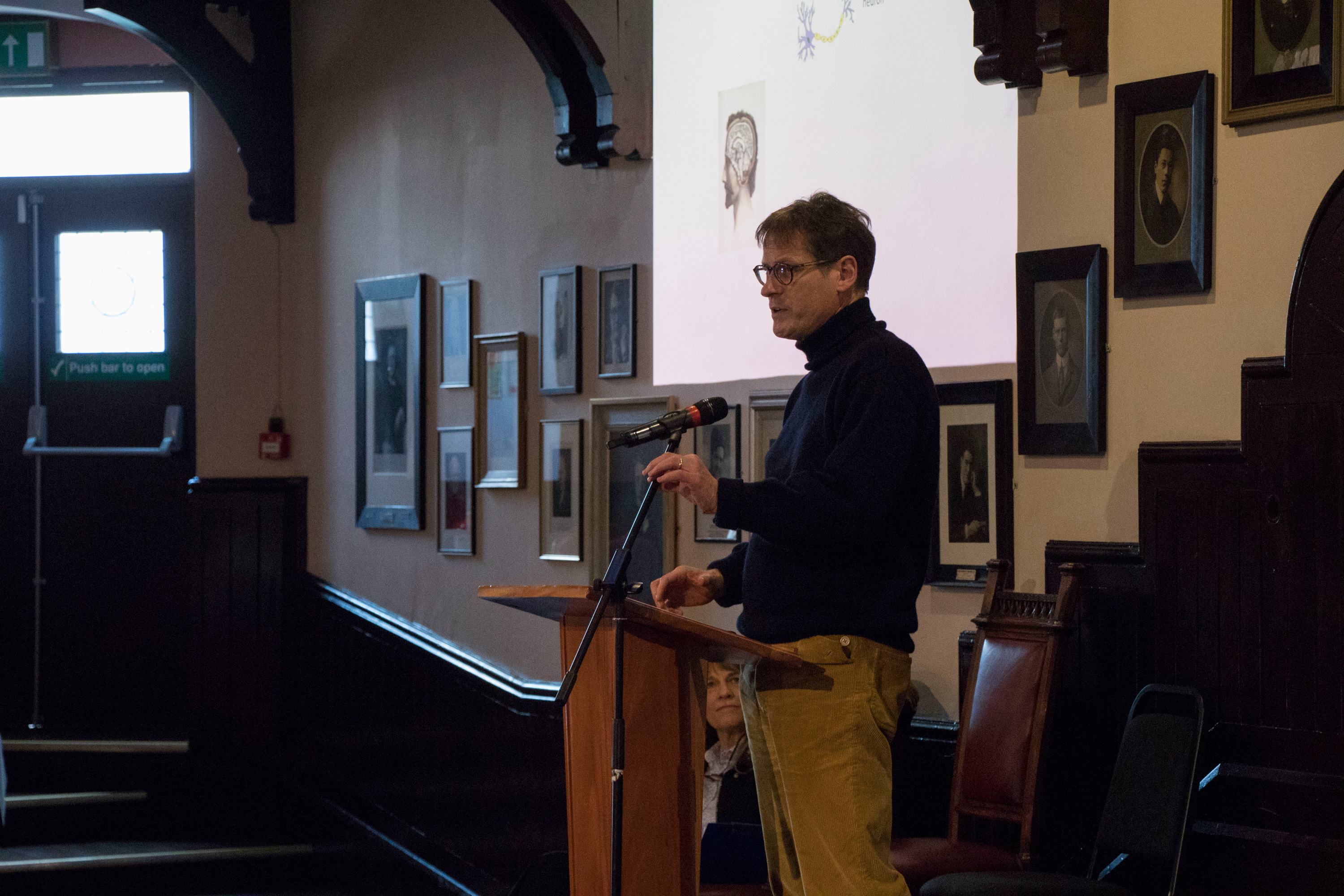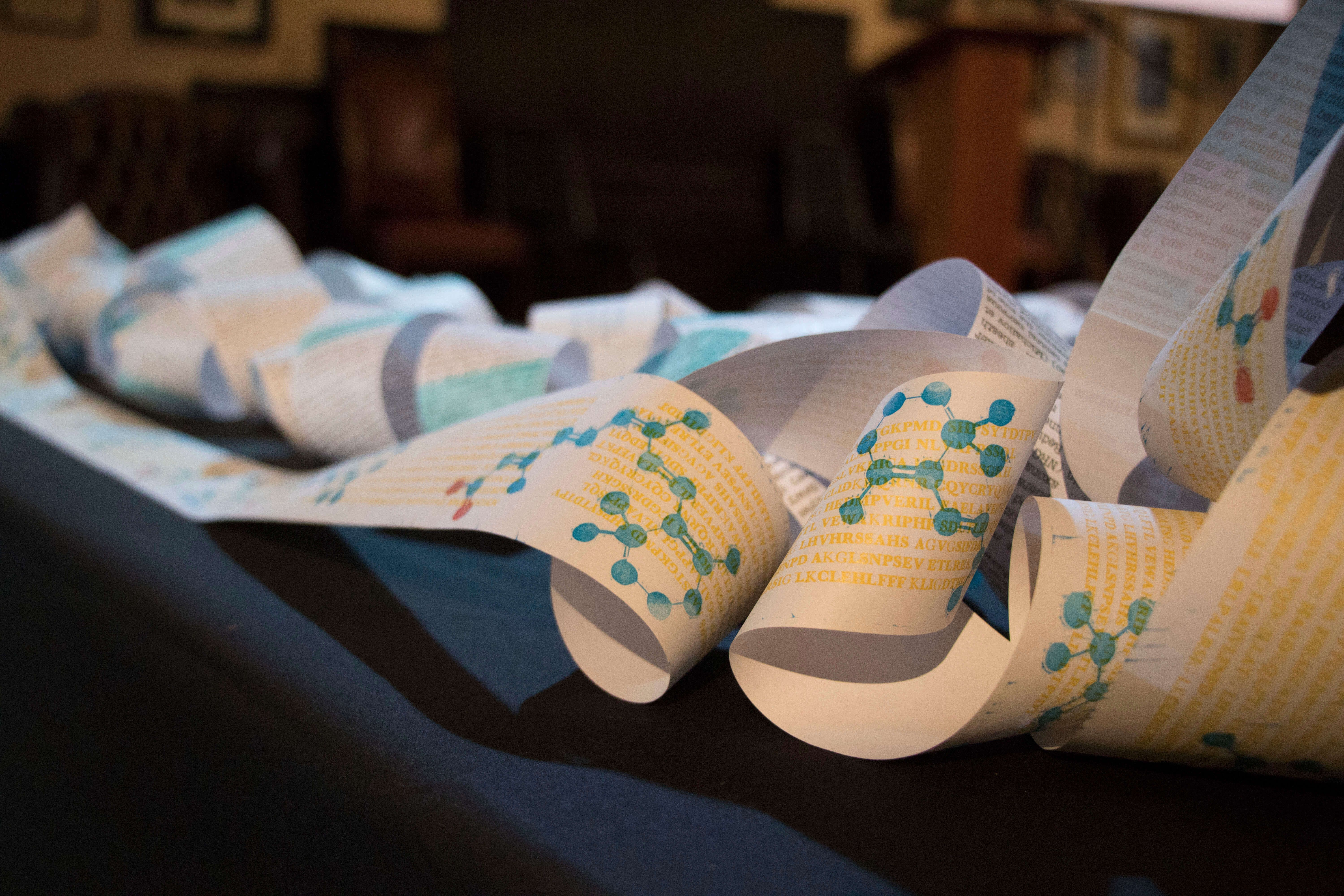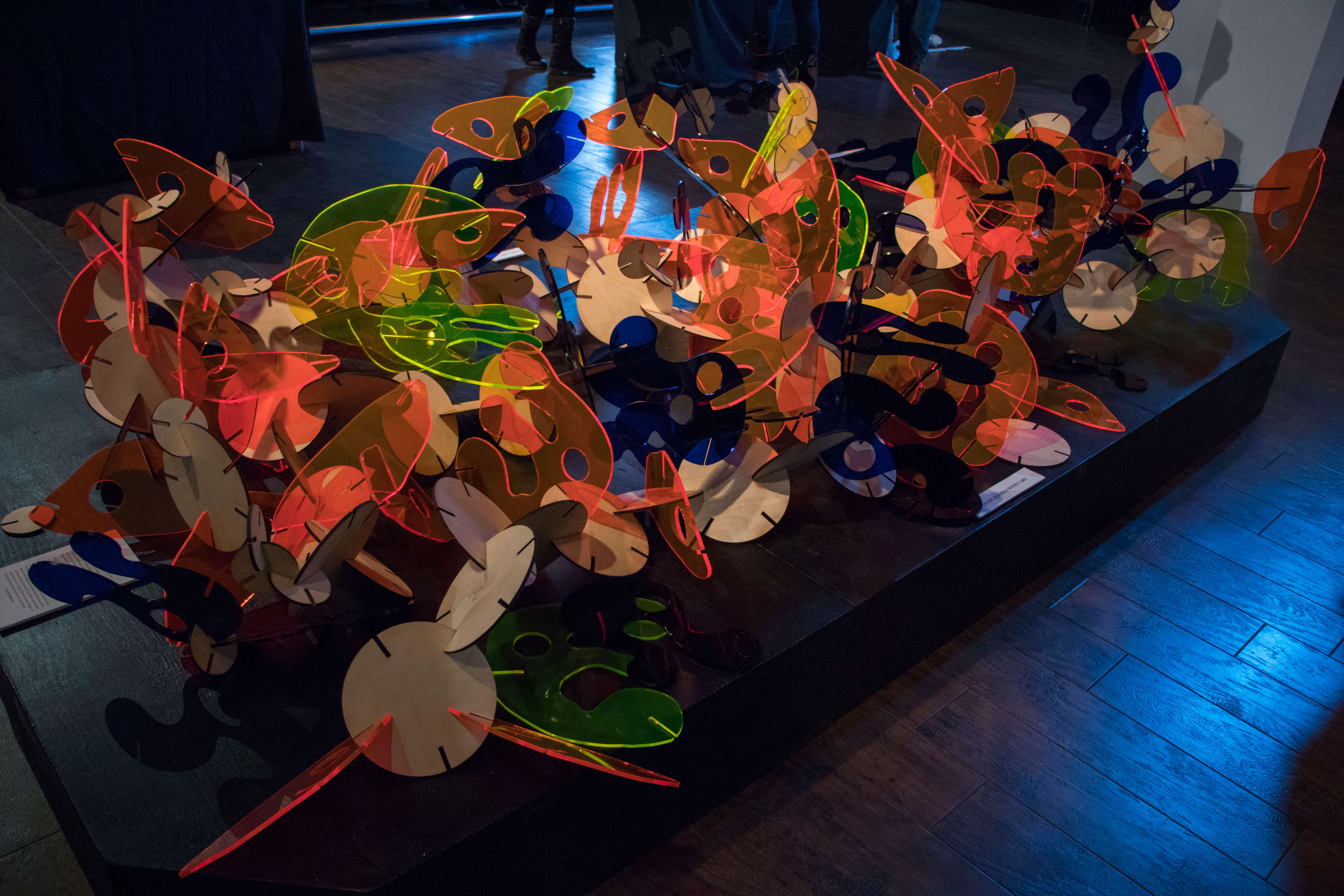What a Nerve Exhibition
Art and science came together at the What a Nerve exhibition curated by the Wellcome-MRC Cambridge STEM Cell institute, and inspired by research by Professor Robin Franklin and Dr Myfanwy Hill (2015).
Professor Franklin’s lab is working on understanding the mechanisms behind demyelination and re-myelination in the brain. The What a Nerve exhibition featured artworks inspired by the lab’s research, and Professor Franklin also gave a talk about his work and its potential for treating Multiple Sclerosis.
The Science
Myfanwy Hill, who worked with the artists to translate science into art, said: "This exhibition sprung out of conversations with the artists about the work the lab does on a particular brain stem cell. As a lab, we’re interested in how this brain stem cell becomes a mature cell in response to injury in the brain, and in particular we’re interested in understanding what might stop the cell from maturing normally in response to injury. This is interesting because in diseases like Multiple Sclerosis we see damage occurring in the brain which, early in the disease, usually repairs very well, but later on seems to stop, and we want to understand why."
Myfanwy speaking at the exhibition
Multiple Sclerosis (MS) is a disease which affects nerves in the brain and spinal cord. Nerve cells, or neurons, communicate electrical impulses in the brain. They’re protected by insulating myelin sheaths which enable faster communication and protect neurons from damage. Another type of cell in the brain, oligodendrocytes, are responsible for creating myelin, and they’re of particular interest to Professor Franklin’s team.
In sufferers of MS the body’s own immune system attacks oligodendrocytes, thereby destroying or damaging the corresponding myelin sheaths around neurons. Oligodendrocytes are able to regenerate, but if the rate of damage overtakes the rate of regeneration it leaves neurons vulnerable to permanent damage. And unlike oligodendrocytes, neurons are incapable of regeneration.
Professor Franklin speaking at the What a Nerve event
Around 8% of cells in the brain are stem cells capable of becoming oligodendrocytes. In the early stages of MS they do this efficiently, often leading to a remittance phase early on. However, the body’s ability to regenerate reduces over time. The progressive stage of MS happens when oligodendrocytes are no longer regenerating and nerve cells are lost.
Professor Franklin is trying to understand the mechanisms behind differentiation of stem cells in order to make the process more efficient, and thereby find a treatment for MS.
An exhibition piece by Elizabeth Fraser, using a typewriter as a metaphor for the brain. The closest paper strip shows the molecular structure of a possible treatment for MS
So how do we stop MS? Professor Franklin explained it as having two stages. Firstly, you stop the inflammation – you put out the fire. Then you have to deal with the damage left behind – rebuilding the house. This is where his work comes in, and he believes that cracking the remyelination problem could make MS a fully manageable disease. Currently they’re focused on a protein called RXR. When RXR receptors are activated it starts the process of turning stem cells into oligodendrocytes, reducing the risk of nerve cell loss.
One of the benefits of working in Cambridge, Professor Franklin added, is that there is a network of people with complementary expertise who can take this kind of research from the lab to practical medicine.
The Art
Myfanwy Hill is a PhD candidate in Professor Franklin’s lab. She worked closely with Kelly Briggs, one of the artists in the exhibition to turn the science of MS into an intriguing piece of art. The sculpture was constructed out of colourful interlocking parts representing the different cells in the brain. Individuals’ dates of diagnosis were inscribed on some of the pieces, grounding the piece in human experience. Viewers were encouraged to take apart and reconstruct the sculpture, echoing the processes of demyelination and re-myelination that take place in the brain.
